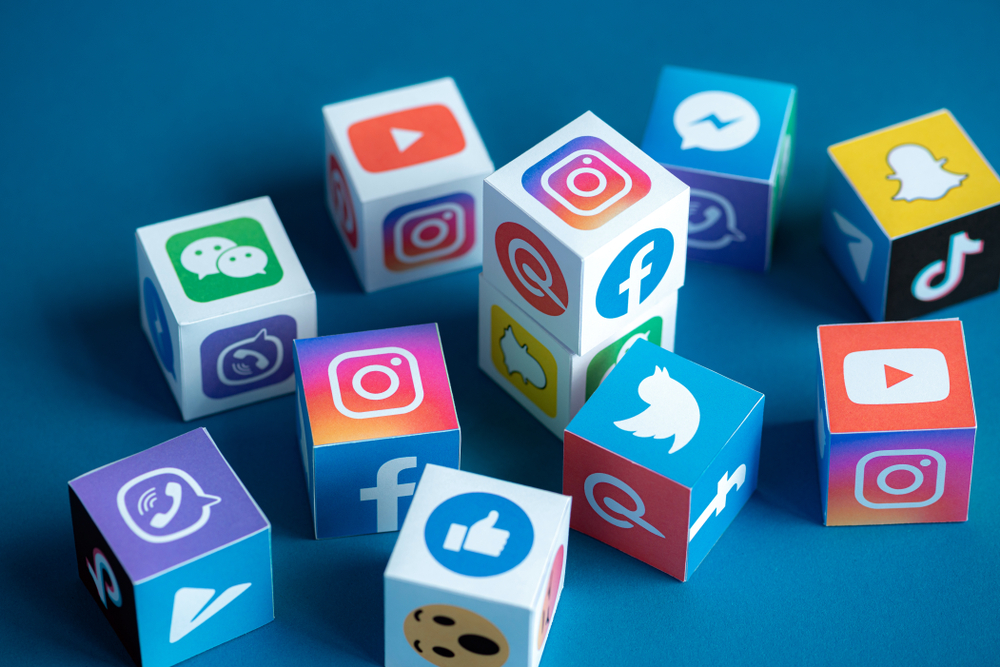
5 Reasons Posting Too Much on Social Media Can Hurt Your Brand
When it comes to social media, more doesn’t always mean better. In fact, flooding your audience’s feed with nonstop content can do more harm than good. We’ve seen firsthand how overposting can lead to algorithm penalties, audience fatigue, and missed opportunities for connection. Here are 5 reasons posting too much on social media can hurt your brand more than help it.
1. The Algorithm Penalizes Low Engagement
Most major platforms — including Instagram, Facebook, and LinkedIn — use engagement-based algorithms to determine what gets seen. Posting constantly without meaningful interaction signals to the algorithm that your content isn’t worth boosting.
Too many posts can:
- Decrease engagement rates per post
- Create internal competition between your own content
- Bury your best-performing posts before they’ve had a chance to shine
Learn how social algorithms work to better time your content for impact.
2. You Risk Audience Fatigue
People follow your brand for value, not volume. If you’re clogging their feed with constant posts, even the most loyal followers may tune out.
Overposting can lead to:
- Unfollows and muted accounts
- Decreased trust and authenticity
- Content becoming white noise instead of a standout message
Your audience’s attention is a privilege. Don’t waste it on filler content.
3. You Dilute Your Brand Message
Consistency is key to brand identity, but too much content often results in disjointed or repetitive messaging. When every post is rushed to meet a self-imposed content quota, your message loses clarity.
With fewer, higher-quality posts, you can:
- Tell a stronger, more cohesive story
- Maintain visual and voice consistency
- Reinforce key brand values
Effective storytelling takes space, not just screen time.
4. You Waste Time, Budget, and Resources
Posting frequently requires significant effort: writing, designing, editing, scheduling, responding, and analyzing. Without a smart strategy, you’re pouring resources into a volume game that rarely pays off.
Overposting can:
- Spread your team too thin
- Increase burnout among your creatives
- Cut into ad spend and other key marketing initiatives
Instead, shift focus to content that converts, not just content that exists.
5. You Miss Opportunities to Optimize
When you post constantly, there’s little time to reflect on what’s working and what isn’t. Slowing down allows you to analyze performance, learn from your audience, and refine your strategy.
Tools like Sprout Social and Meta Business Suite can help you:
- Track engagement and reach over time
- A/B test creative approaches
- Discover optimal posting times
A well-timed, strategic post will always outperform a barrage of forgettable ones.
Make Every Post Count with Mad Men Marketing
We don’t just create content; we create meaningful, data-driven digital experiences. If your current social media strategy feels overwhelming or ineffective, let’s recalibrate. We help brands like yours focus on what matters most: building relationships, boosting engagement, and driving real results.
Let’s rethink your approach together.
Contact us today to get started on a smarter, more strategic social strategy.

5 Top Trends in Content Creation Every Marketer Should Know in July 2025
The content creation landscape is evolving faster than ever. From AI-powered storytelling to snackable video formats, staying ahead of the curve means knowing what’s working right now. Here are 5 top trends redefining content in July 2025—and how to use them to your advantage.
1. Generative AI as a Creative Partner 🤖
Generative AI has moved from experimental tool to core strategy. Content teams are using AI to brainstorm creative angles, automate repetitive tasks, and refine tone for different audience segments.
But AI is a co-pilot, not the pilot. As Hootsuite reports, 69% of marketers say AI “helps them create significantly more content than they could without it.”
Key Takeaway: Use AI to accelerate workflows—but always add a human touch before publishing.
2. Short-Form Video Drives Results
Short-form content dominates engagement. TikTok, Instagram Reels, and YouTube Shorts consistently outperform other formats. According to Lifewire, short-form videos generate more than twice the engagement of long-form clips.
Key Takeaway: Build content for short-form first, then repurpose snippets into longer content or multi-channel campaigns.
3. Meme Marketing Goes Mainstream
Memes are now a staple in digital engagement. According to Forbes, meme-driven campaigns can drive 60% higher engagement compared to standard ad campaigns.
Key Takeaway: Use meme marketing to add relatability, but review and test them internally to ensure they fit your brand’s tone.
4. Employee-Generated Content Boosts Trust
Authenticity is king. Brands that showcase real team members—sharing day-in-the-life stories, client wins, or behind-the-scenes moments—are building stronger connections with their audience. TRIBE reports micro and nano creators (under ~50k followers) deliver the most loyal engagement.
Key Takeaway: Encourage employees to share authentic moments and highlight their content to build a relatable brand voice.
5. Optimizing for AI Search & Voice Assistants
Voice search and AI-powered answers are transforming the way audiences discover content. According to a recent Semrush report, optimizing content for tools like ChatGPT, Google Gemini, and Alexa falls under Generative Engine Optimization (GEO)—and it’s becoming just as crucial as SEO.
Key Takeaway: Structure your content with clear headings, FAQs, and bullet points to improve its chances of being pulled into AI-generated answers.
How to Put These Trends Into Action
- Treat AI as a helper, not a replacement. Use it to ideate and automate—but polish the final content manually.
- Lead with short-form video. Build 15- to 60-second clips as primary assets, then repurpose into long-form content.
- Leverage meme marketing carefully. Keep it fun and authentic without straying from your brand voice.
- Empower your team. Encourage employees to create content that shows your culture.
- Prepare for AI-driven discovery. Make your content easy for voice assistants and AI bots to reference by structuring key insights clearly.
Final Thought
In 2025, success comes from blending speed, authenticity, and smart technology. By embracing these trends, brands can create content that resonates, converts, and stays ahead of digital shifts.
Ready to take your content to the next level? Get in touch with our team and let’s create strategies that keep you ahead of the trends.

Gym Advertising – It’s Time To Rethink It
Why Corporate Gym Advertising Needs A Massive Overhaul
Have you ever noticed that the moment you show even a slight interest in fitness online, your social media feed gets flooded by gyms like F45, Orange Theory, D1, or Chuze Fitness? You’re not alone. Corporate gym franchises overwhelmingly focus their advertising budgets on social media platforms, which, at first glance, makes sense. Social media ads allow precise targeting, quick adjustments, and immediate feedback. However, there’s one big problem: every gym is using the exact same playbook, targeting the exact same audience.
The Problem with Oversaturated Social Media Ads in Gym Advertising
The strategy of heavy reliance on social media ads creates an unintended echo chamber. Once Facebook, Instagram, or Meta tags you as someone interested in fitness, you’re bombarded by ads from multiple gyms, all essentially offering the same thing. This results in:
- Ad fatigue: People quickly become annoyed by repetitive ads.
- Diminished ROI: Rising costs per acquisition (CPA) and cost per thousand impressions (CPM) due to fierce competition.
- Loss of differentiation: Your gym’s unique value gets buried under an avalanche of similar messaging.
Why Diversification Matters in Gym Ads
The secret to standing out isn’t doing more of the same; it’s doing things differently. Diversifying your marketing approach ensures your message doesn’t blend into the background noise. Here are effective alternative strategies gyms should consider:
- Local Partnerships and Events: Partner with nearby businesses, organize community events, or sponsor local sports teams. Physical community involvement not only builds genuine relationships but also fosters brand loyalty.
- Influencer and Micro-influencer Campaigns: Authentic, targeted recommendations from respected local influencers can resonate deeply and appear more organic than repetitive corporate ads.
- Content Marketing: Create valuable, educational content through blogs, videos, or podcasts. Helpful content positions your gym as an authority, increases organic SEO, and genuinely engages your audience.
- Email Marketing: Tailored, segmented email campaigns can nurture leads more personally and effectively, cutting through the noise that saturates social platforms.
- Streaming Media and TV Ads: Explore advertising through streaming media platforms like Spotify or streaming television services such as MLB TV, Hulu, YouTube, or Paramount Plus. These channels offer opportunities to target specific audiences with less competition and higher viewer engagement.
Franchise Owners, It’s Time to Innovate
If you’re a franchise owner, it’s essential to communicate with corporate leadership about the shifting landscape. Just because a social-media-centric approach worked five years ago doesn’t guarantee it’s the right strategy today, especially considering evolving consumer habits and increasing ad costs. Advocating for flexibility and diversification can position your franchise as forward-thinking and adaptable.
Independent Gyms: Seize the Advantage
Local independent gym owners have a distinct advantage: agility. You can pivot quickly, experiment with new advertising strategies, and genuinely reflect your local community in your messaging. While corporate franchises are bogged down by slow-moving corporate decisions, you can outpace them by diversifying early and authentically engaging your audience.
Final Thoughts
Advertising on social media still holds value, but putting all your marketing eggs into one basket limits your growth potential. Diversification not only helps you reach new audiences but significantly enhances your gym’s visibility and brand strength in an increasingly crowded marketplace. Step outside the digital echo chamber—your business depends on it.

What Social Media Platforms Are the Best to Advertise On?
In today’s fast-paced digital landscape, choosing the right social media platforms for advertising is crucial to maximizing your brand’s reach and engagement. Before anything else, let’s explore the top social media platforms you should consider for your advertising efforts.
Owned by Meta, Facebook remains a powerhouse in social media advertising due to its extensive user base and advanced targeting options. With over 2.8 billion monthly active users, it offers a vast audience for advertisers. Facebook Ads Manager allows you to target users based on demographics, interests, behaviors, and even life events. Additionally, Facebook’s retargeting options help you reach users who have previously interacted with your website or content, enhancing your chances of conversion and further optimizing your funnel.
Also part of the Meta family, Instagram has become a favorite for brands looking to engage with a younger, visually-driven audience. With features like Stories, Reels, and Shopping, Instagram provides diverse advertising formats to showcase your products or services. The platform’s emphasis on visual content makes it ideal for brands in the fashion, beauty, food, and lifestyle industries. Even more, Instagram’s integration with Facebook Ads Manager ensures seamless ad campaign management.
For B2B companies, LinkedIn is an invaluable platform. With over 774 million professionals, LinkedIn allows you to target ads based on job titles, industries, company size, and more. Sponsored Content, InMail, and Text Ads are popular ad formats on LinkedIn that can help you reach decision-makers and professionals in your target market. It’s an excellent platform for generating leads, building brand authority, and driving traffic to your website while targeting large groups of professionals with ease.
X (formerly Twitter)
X’s fast-paced environment is perfect for real-time engagement and brand visibility. With over 330 million monthly active users, X allows you to join conversations, promote your content, and engage with your audience through Promoted Tweets, Promoted Accounts, and Promoted Trends. It’s particularly effective for brands looking to capitalize on trending topics and engage with a highly interactive audience.
TikTok
TikTok has taken the social media world by storm with its short-form, engaging video content. With over 1 billion active users, TikTok is an excellent platform for reaching even younger demographics than Instagram. TikTok Ads offer various formats, including In-Feed Ads, Branded Hashtag Challenges, and Branded Effects, allowing brands to create authentic and viral content. If your brand can tap into creative and trendy content, TikTok can significantly boost your brand awareness with demographics that are otherwise suspicious of overly corporate content.
Pinterest is a visual discovery platform ideal for brands in the home decor, fashion, beauty, and DIY industries. With over 459 million monthly active users, Pinterest Ads can drive significant traffic to your website and increase sales. Promoted Pins, Video Pins, and Shopping Ads are effective formats for showcasing your products and inspiring potential customers. Pinterest’s unique search-based advertising can help you reach users who are actively looking for ideas, inspiration, and creative solutions.
YouTube
YouTube is the second largest search engine in the world, making it a powerful platform for video advertising. With over 2 billion logged-in monthly users, YouTube offers a massive audience for your ads. YouTube Ads come in various formats, including Skippable and Non-Skippable Video Ads, Bumper Ads, and Sponsored Cards, providing flexibility in how you present your content. Video ads can be targeted based on demographics, interests, and even specific YouTube channels or videos, allowing for highly precise audience targeting. YouTube is especially effective for building brand awareness and showcasing detailed product demonstrations or tutorials.
Which Platform is Right for You?
The best social media platform for advertising depends on your business goals, target audience, and industry. At Mad Men Marketing, we help you develop a tailored social media strategy that aligns with your objectives and leverages the strengths of each platform.
Ready to Elevate Your Social Media Advertising?
Partner with Mad Men Marketing and let us craft a comprehensive social media advertising strategy that drives results. Contact us today to schedule a consultation and discover how we can help your brand shine in the digital space.

Navigating the Future: 10 Social Media Trends Shaping 2024
As we step into 2024, social media continues to evolve, reshaping how we communicate, shop, and engage with the world. From AI-generated content to immersive virtual communities, these platforms are not just about connecting people anymore; they’re about creating rich, interactive, and, oftentimes expansive experiences. Let’s explore some of the biggest social media trends that are redefining (or continuing to define) the landscape in 2024.
AI-Powered Content Creation:
Artificial Intelligence has revolutionized content creation. Platforms now use AI to suggest content ideas, auto-generate posts, and even craft personalized responses. This trend is not only making content creation more efficient but also more targeted and engaging.
Augmented Reality Experiences:
Augmented Reality (AR) continues to blur the lines between the virtual and real worlds. Social media platforms have embraced AR for filters, games, and interactive ads, offering users a more immersive and engaging experience.
Voice and Conversational Interfaces:
Voice interfaces are becoming a staple in social media. Features like voice commands, voice tweets, and audio chats are gaining traction. Though certain platforms and functionalities (R.I.P. Clubhouse & Twitter Circles) have waned in popularity since the pandemic, the trend still has a lot of steam left in it. These interfaces make social media more accessible and offer a fresh way of engaging with others.
Short-Form Video Content:
The explosive popularity of short-form videos, pioneered by TikTok, remains a dominant trend. These quick, engaging videos cater to the decreasing attention spans of users and are a powerful tool for storytelling and advertising, especially as YouTube & Instagram/Facebook have prioritized their own versions.
Social Commerce:
Buying and selling through social media platforms, known as social commerce, is transforming the shopping experience. With features like shoppable posts, live stream shopping, and integrated checkout, social media is becoming a significant retail hub.
Ephemeral Content:
Ephemeral content like Stories, which disappear after a short period, continues to be popular for its authenticity and immediacy. This trend caters to the user’s desire for real-time, unfiltered content.
Increased Privacy and Security:
With growing awareness about data privacy, social media platforms are enhancing security measures and offering more privacy controls to users. This shift is crucial in maintaining user trust and complying with global data protection regulations.
Social Media for Social Good:
Platforms are increasingly being used for advocacy, awareness, and fundraising. Users and organizations leverage these tools to drive social change, making social media a powerful tool for good.
Virtual Reality (VR) Communities:
The rise of VR technology has led to the creation of virtual communities where users can interact in a fully immersive environment (think Metaverse). These spaces, though still in their infancy, offer new possibilities and expanded horizons for socializing, gaming, and even attending virtual events.
Data-Driven Personalization:
The use of big data and analytics for personalization remains consistent. Platforms continue to utilize user data to curate content, suggest connections, and even predict trends, offering a highly personalized social media experience.
These trends highlight the continuous evolution of social media, driven by technological advancements and shifting user expectations.
Looking for help navigating the ever-shifting social media landscape? Give us a call at 904-355-1766 or contact us today!


